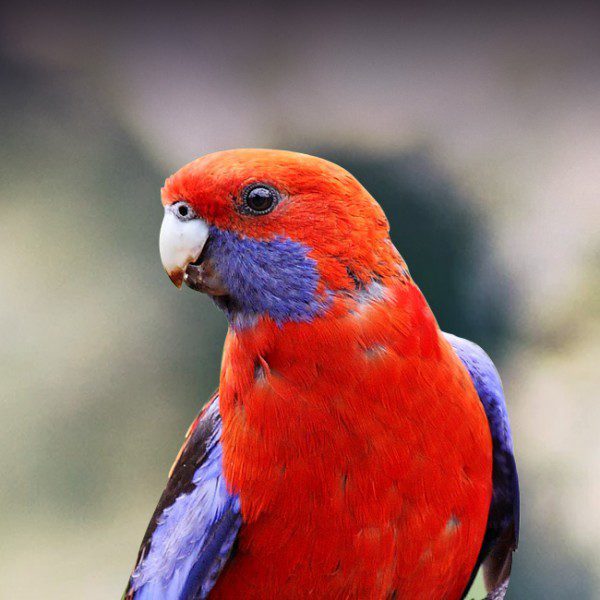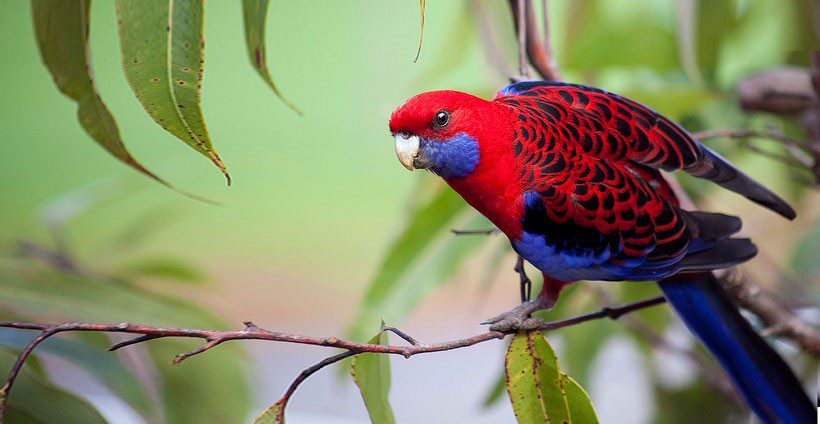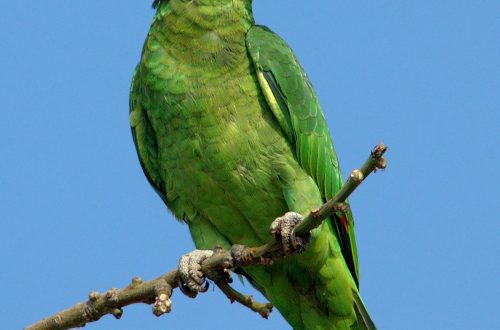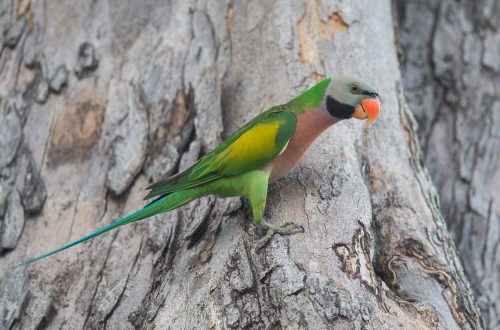
Red rosella

Red Rosella (Platycercus elegans)
| Order | Parrots |
| family | Parrots |
| Race | Roselle |
APPEARANCE
Medium parakeet with body length up to 36 cm and weight up to 170 gr. The shape of the body is knocked down, the head is small, the beak is rather large. The coloration is bright – the head, chest and belly are blood red. Cheeks, wing feathers and tail are blue. The back is black, some feathers of the wings are bordered with red, whitish color. There is no sexual dimorphism, but males are usually larger than females and have a more massive beak. 6 subspecies are known, differing in color elements. Some subspecies can successfully interbreed giving fertile offspring. Life expectancy with proper care is about 10 – 15 years.
HABITAT AND LIFE IN NATURE
Depending on the subspecies, they live in the south and east of Australia, as well as on the adjacent islands. In the northern regions, red rosellas prefer mountain forests, the outskirts of tropical forests, and eucalyptus thickets. To the south, birds prefer to settle in open forests, gravitate towards cultural landscapes. This species can be called sedentary, however, some populations can move. Young birds often huddle in noisy flocks of up to 20 individuals, while adult birds stay in small groups or pairs. Birds are monogamous. According to recent studies, these birds determine the subspecies by smell. And also the fact that hybrids between subspecies are more resistant to diseases than pure species. Cats, dogs, and also foxes in some regions are natural enemies. Often, females of the same species destroy the clutches of their neighbors. They feed mainly on plant seeds, flowers, buds of eucalyptus and other trees. They also eat fruits and berries, as well as some insects. An interesting fact is that birds do not participate in the dispersal of plant seeds, as they chew the seeds. In the past, these birds were often killed by farmers, as they damaged a significant part of the crop.
BREEDING
The nesting season is in August-January or February. Usually, for nesting, the couple chooses a hollow in eucalyptus trees at a height of up to 30 m. Then the couple deepens the nest to the desired size, chewing the wood with their beaks and covering the bottom with chips. The female lays up to 6 eggs in the nest and incubates them on her own. The male feeds her all this period and guards the nest, driving away competitors. Incubation lasts about 20 days. Chicks are born covered in down. Usually more females hatch than males. For the first 6 days, only the female feeds the chicks, the male joins after. By 5 weeks they fledge and leave the nest. For some time they still stay with their parents who feed them. And later they stray into flocks of the same young birds. By 16 months, they acquire adult plumage and become sexually mature.







